How to Make Homemade Udon Noodles
Fresh homemade udon noodles are surprisingly easy to make – all you need are 4 simple ingredients and a lazy weekend afternoon. They freeze really well, so you can always have them on hand for fast and easy weeknight dinners!
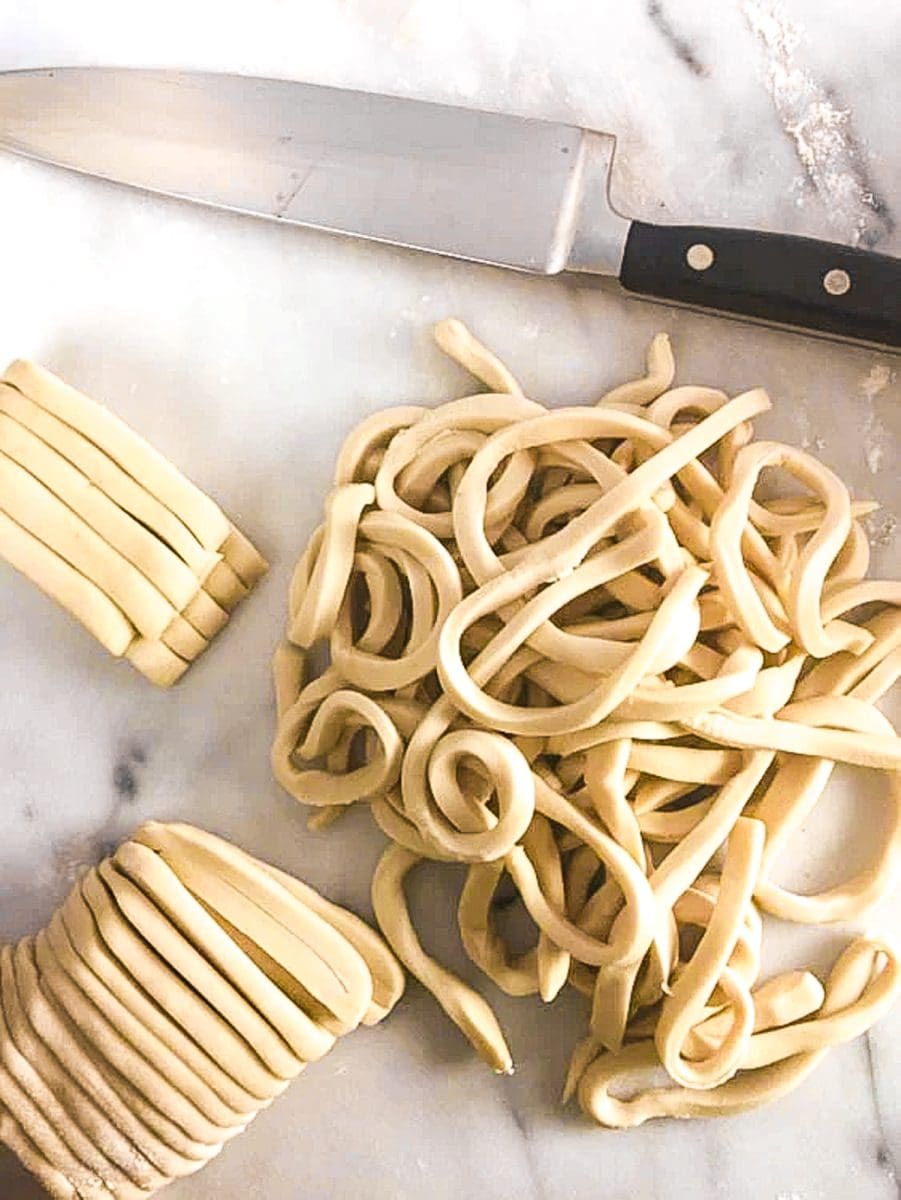
If you’ve been reading Healthy Delicious for a while, you probably already know that I love udon noodles. Imagine my excitement when one of my most recent culinary school assignments was to make them from scratch!
These fresh noodles are a million times more delicious than the dried udon noodles found in grocery stores. They have an amazing texture – these thick Japanese noodles are firm, but also nice and chewy.
Plus, I can’t get over how easy this udon noodle recipe is to make!
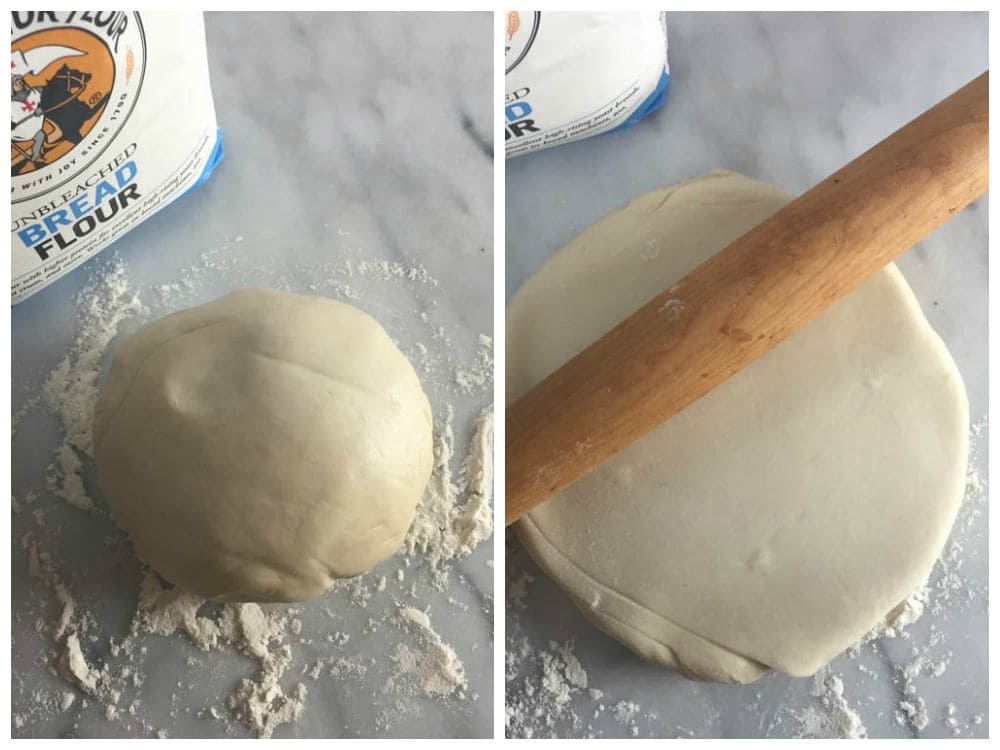
Ingredients needed to make Fresh Udon Noodles:
- Bread flour. Bread flour has a higher gluten content than regular all-purpose flour, so it gives these noodles their iconic chewy texture. The recipe won’t be the same at all with regular flour, so bread flour really is a must.
- Corn starch or tapioca starch. You can also use potato starch, but this will give the noodles a slightly different flavor.
- Warm water
- Sea salt
Tips for making the best udon noodles from scratch:
There are a few steps involved in making udon noodles, but each only takes a couple of minutes to complete.
Since the dough needs to rest between each stage, it’s best to spread the process out over an afternoon. Luckily, the noodles keep really well and can even be frozen. I made a batch on Sunday afternoon, then used them to make an easy stir fry on Monday night.
If you have a stand mixer, you’ll definitely want to pull it out for the kneading portion of this recipe. The dough is very thick and dry, so it’s difficult to knead by hand. (Traditionally, udon noodle dough is kneaded with your feet!)
Once it’s smooth and has rested, it’s incredibly easy to roll out the dough and cut into strands. You can cook it right away (just boil the noodles for about 3 minutes) or freeze it for another night.
FAQs:
What do udon noodles taste like?
These noodles have a neutral flavor, with a fantastically chewy texture. They’re great for soaking up all sorts of sauces and are a delicious addition to hot broth or miso soup.
Can I use all purpose flour?
The high gluten content of bread flour is key to getting the texture of these chewy noodles right. All purpose flour unfortunately doesn’t hold together the same way and will taste more like Italian pasta without that classic udon texture. If you happen to have vital wheat gluten, you can add 1 1/2 teaspoons per cup of all purpose flour to make your own bread flour.
Are udon noodles the same as soba noodles ?
Nope, these are two completely different noodles and both are delicious.
Japanese udon noodles are thick, chewy noodles made from glutinous white flour. Soba noodles are thinner and made with buckwheat flour. Soba is also less chewy than udon.
Quick meals using Japanese noodles:
I love using these homemade noodles in a quick udon noodle soup with bonito flakes, lots of vegetables, like bok choy, and fresh ginger. It’s also great as the base for a stir fry with your choice of protein, hoisin sauce, dark soy sauce (or regular soy sauce), napa cabbage, green onion, and a sprinkle of sesame seeds. Fried udon noodles get a little crispy and they’re so good!
You can also try one of these delicious recipes:
Garlicky stir fried udon noodles noodles with pork (one of my absolute favorite recipes!)
One-pot shrimp udon bowls
Udon stir fry with ponzu and brown butter
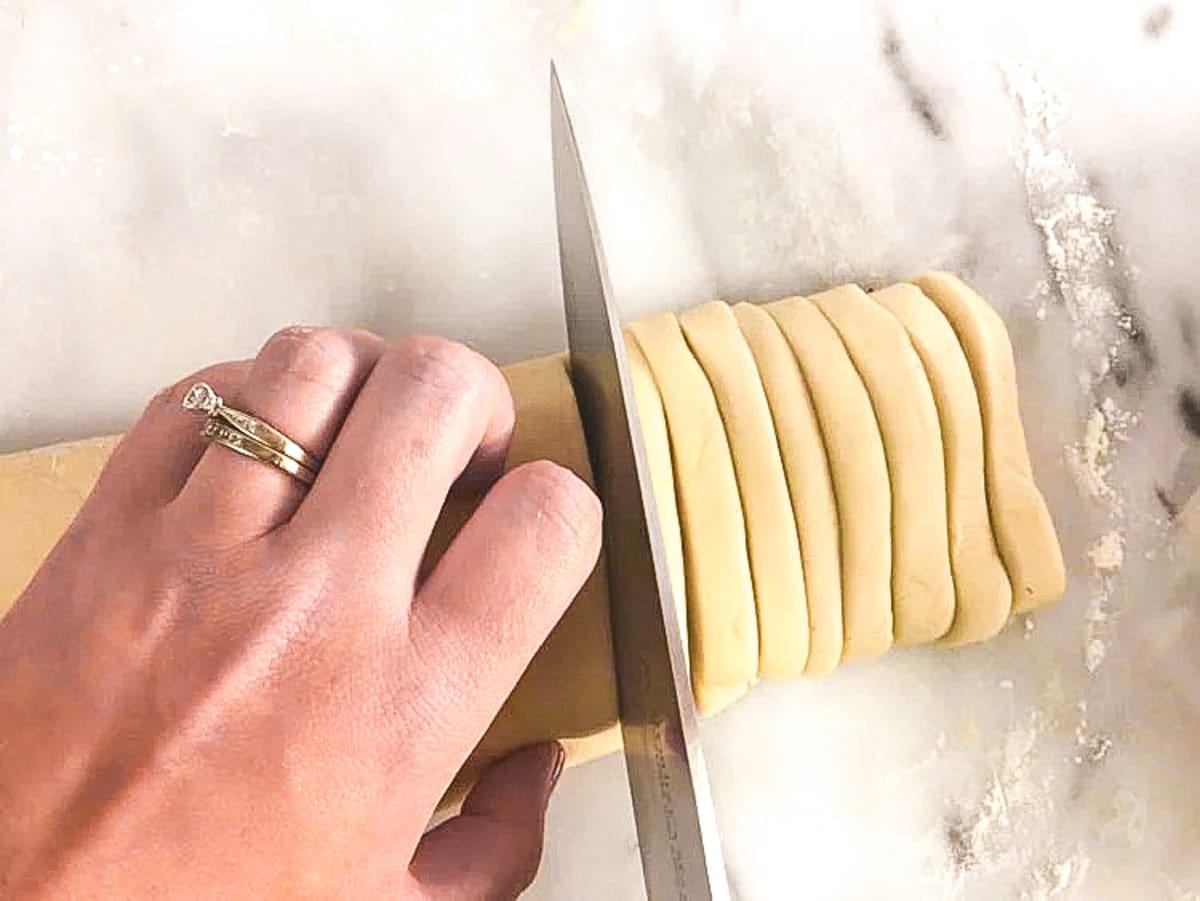

Homemade Udon
Ingredients
- 2 ¾ cups bread flour
- ⅓ cup corn starch or tapioca starch
- ¾ cup warm water
- 1 ½ tsp sea salt
Instructions
- In a small bowl, dissolve the salt in the warm water. Sift the flour and starch into a second bowl.
- Make well in the center of the flour bowl and pour about 1/2 of the water into the well. Mix with your hands, scraping the bottom of the bowl, until the water is incorporated – use a swift upward motion to “toss” the water into the dough, creating a sandlike mixture.
- Add about 1/2 of the remaining water and continue to mix until the dough begins to separate into strands. Finally, add the rest of the water and mix and squeeze the dough together until it binds into a ball. The dough will not be smooth at this point. Let the dough rest in the bowl for 30 minutes.
- Knead the udon dough until very smooth and shiny, either by hand or using a stand mixer. This will take a full 8 to 10 minutes using a stand mixer. Once the dough is smooth, form it into a tight ball and rub with a little olive oil. Place the dough ball into a clean bowl, cover with a cloth and allow to rest at room temperature for 3 to 4 hours.
- Sprinkle your counter with flour and place the dough onto it. Roll to a 1/4–inch thickness.
- Sprinkle the dough with starch, then fold the dough in half. Sprinkle with more starch and fold in half again. Let the dough rest 30 minutes.
- With a sharp knife, cut the dough crosswise into noodles about 1/4–inch to 1/2-inch wide. Separate the noodles to prevent them sticking together
- To cook:
- Bring a large pot of salted water to a boil over medium-high heat. Add the noodles and cook until they float, about 3 minutes.
- To freeze:
- Place small portions of noodles on a plate or sheet pan and place in the freezer. Once noodles are frozen, transfer them to ziptop freezer bags or a similar airtight container. To cook, add frozen noodles directly to boiling water.


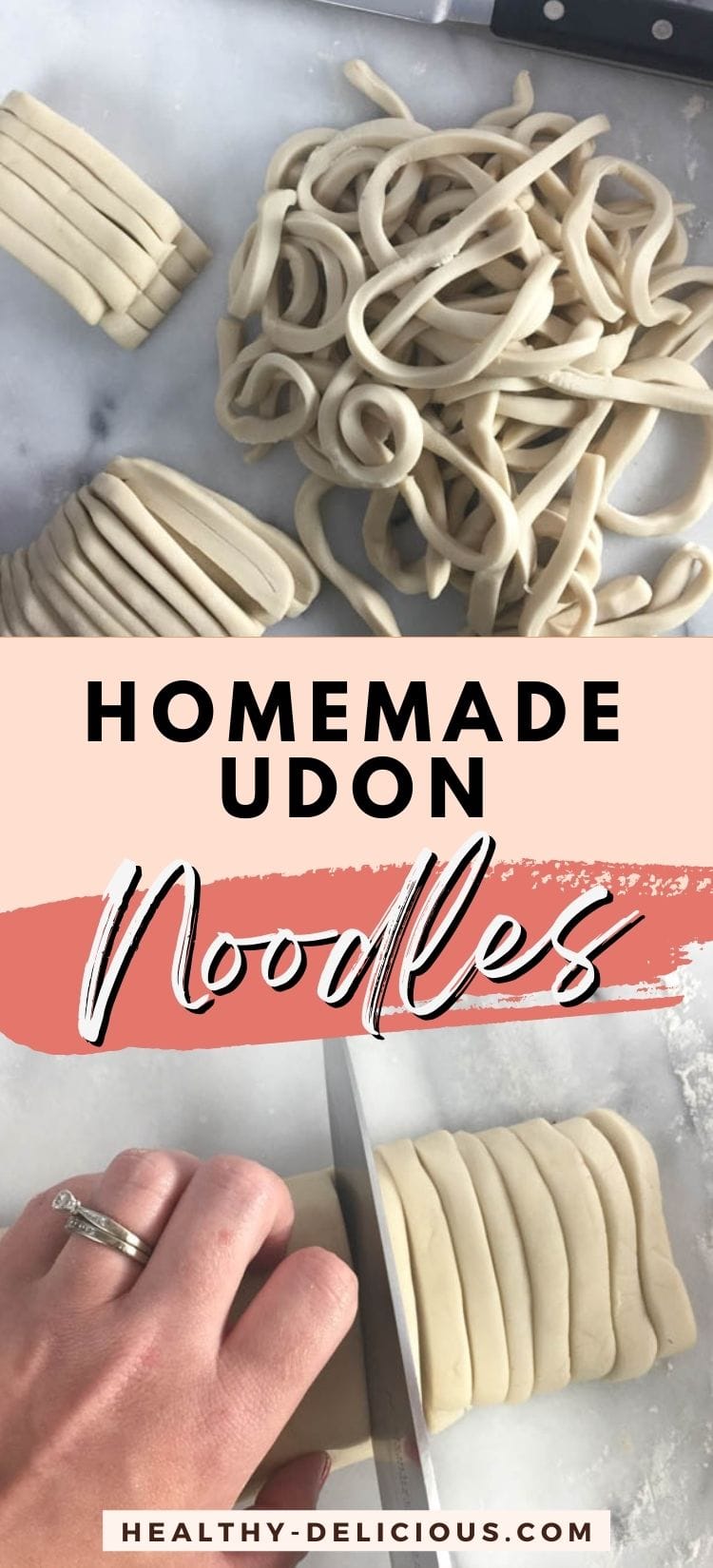
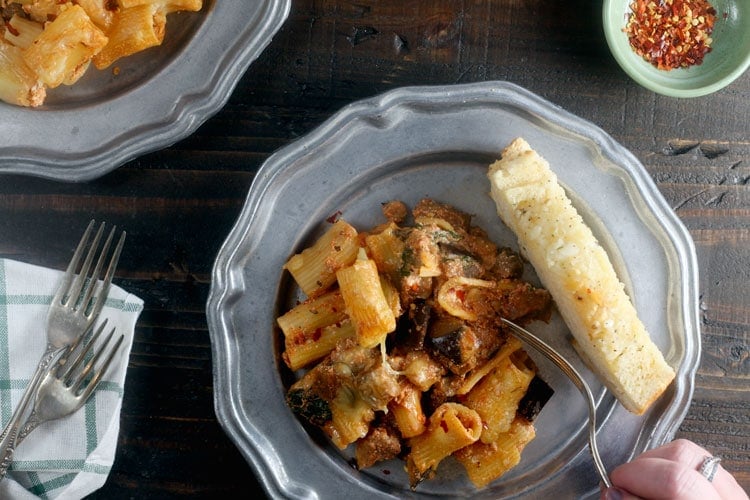
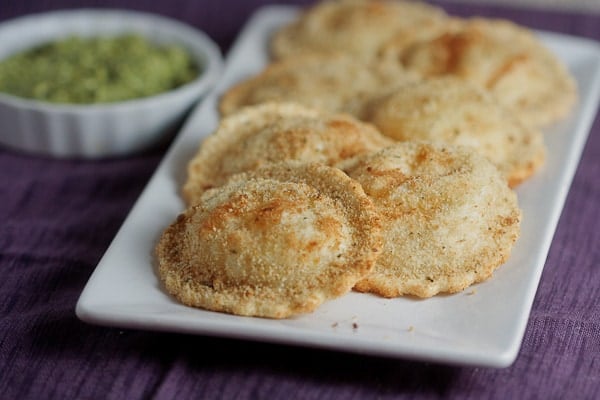
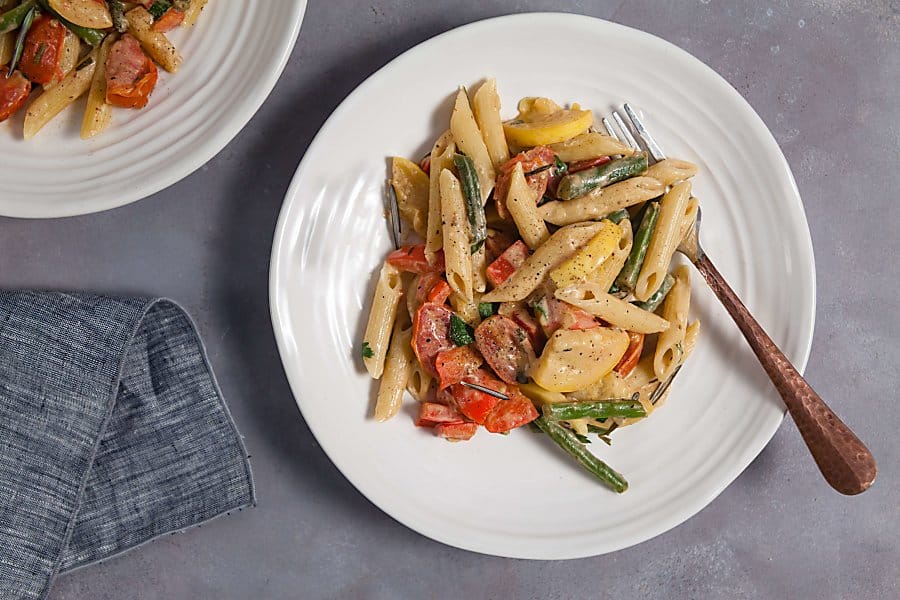


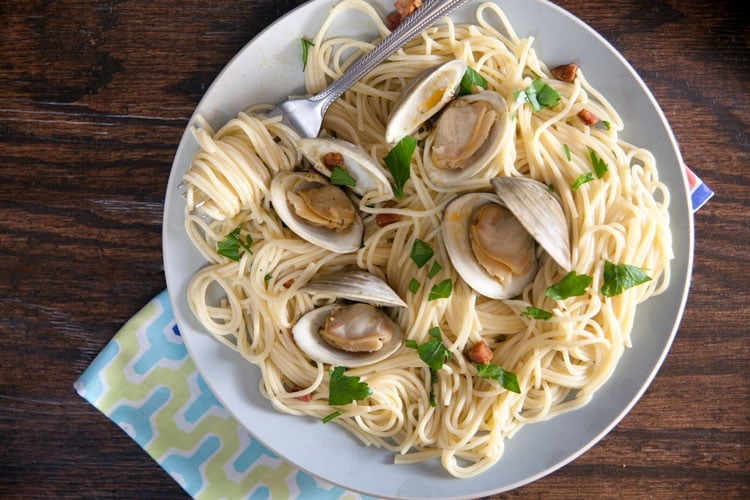
I wish you had a video to go with this. I ended up using more water than called for and even then i dont think it was enough. I had no idea what the dough was supposed to look like after kneading but by the last step, it was clear it wasnt right. Hoping to try again soon with better results.
Video is really difficult, but I’ll add it to my to do list!
I agree !! That would be amazing !
Do you think its possible to switch the corn starch with arrowroot powder?
I haven’t tried this!
Can I use the KitchenAid spaghetti pasta attachment instead of cutting it?
I haven’t tried this, since I don’t have that attachment. The dough might be too thick, but I honestly don’t know!
I’m confused about the thickness, your picture shows them way thicker than 1/4 in. Please let me know the thickness of the picture so I can accurately make these, thank you